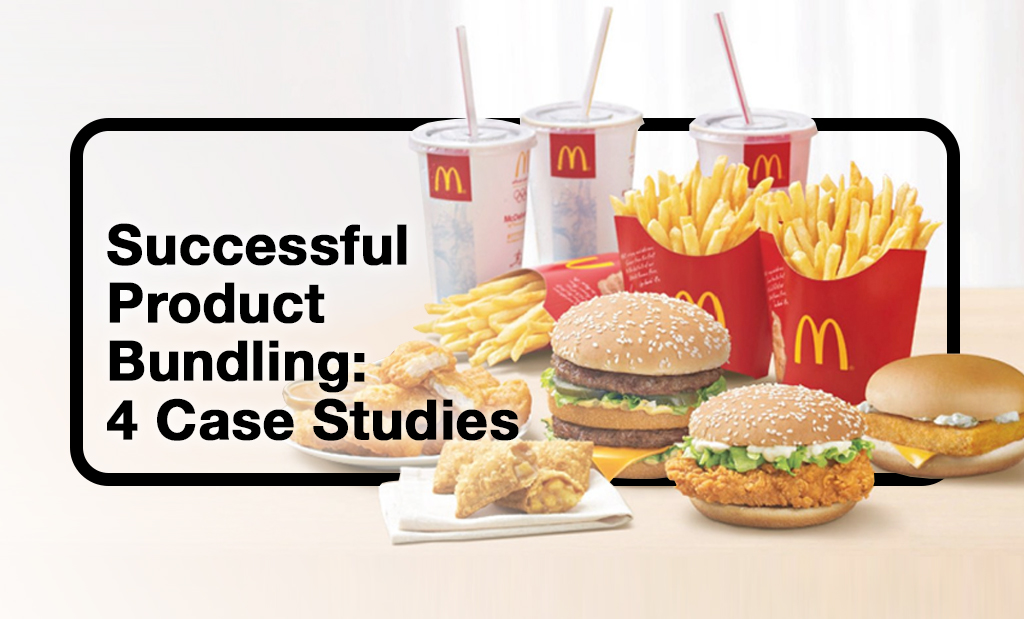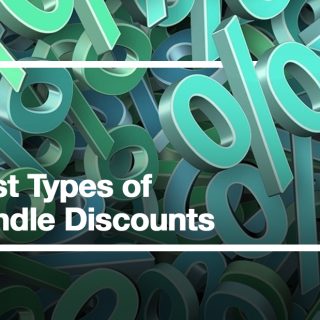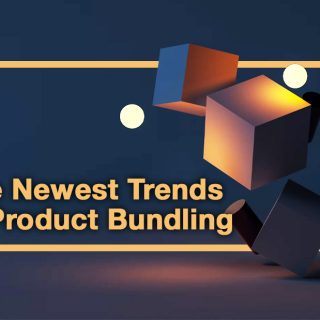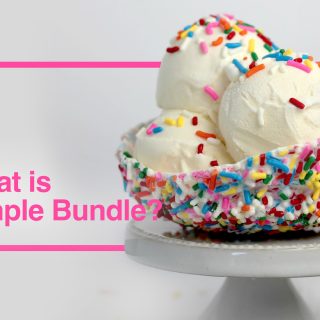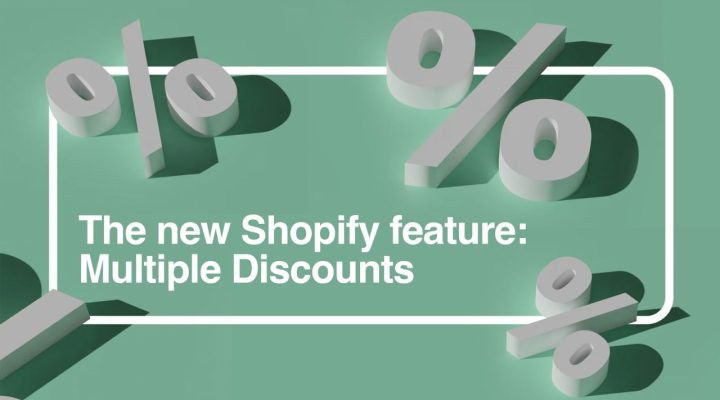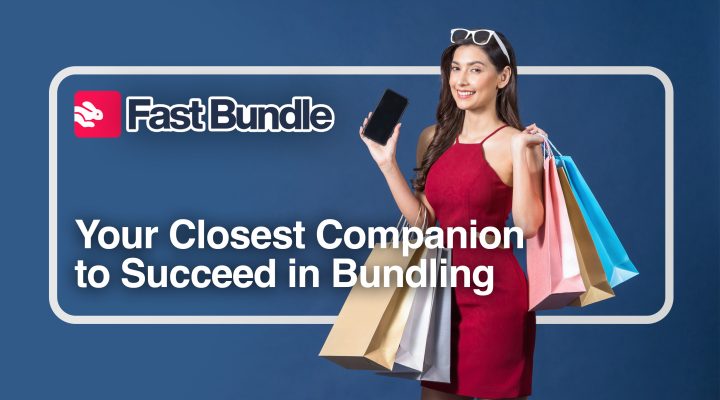If you’ve ever bought anything from Amazon, you have probably seen the “Frequently Bought Together” feature, which recommends complementary products based on customer behavior. The platform suggests similar products (to the one that’s already going in your cart) to encourage you to bundle them together. This is one of the simplest yet most famous product bundles, significantly contributing to Amazon’s dominance in the e-commerce market by driving additional sales and enhancing the shopping experience. There are many more successful case studies in this field.
Product bundles, where companies package multiple products together, often at a discounted price, are usually used to enhance the perceived value and encourage higher sales volumes.
This approach increases average order value and improves customer satisfaction by offering convenience and value. In this article, we will delve into four exemplary case studies of product bundling that have not only taken their respective businesses to new heights but also set a benchmark for others in the industry. From tech giants to small startups and Fast Foods, these examples demonstrate the versatility and effectiveness of bundle sales promotion in various sectors.
Explore our Bundle App
McDonald’s Happy Meal: a name that makes everyone smile!

Since the 1980s, “Happy Meal” has been a product bundle that every child in the US (and children in Europe and even some parts of Asia) is familiar with. This is one of the oldest and most popular Case studies in product bundling: a combo meal consisting of a Hamburger, Fries, apple bites, a 1% Low-Fat Milk Jug, and a toy or book. What’s more exciting for a kid than getting their favorite fast food and a present while eating it!
Introduced in 1979, this revolutionized the fast-food industry by targeting a younger demographic with a unique product bundling and pricing strategy. The concept, originally conceived by McDonald’s advertising executive Bob Bernstein, combined a child-sized portion of a hamburger or cheeseburger, fries, a drink, and a toy into a single, attractively packaged meal. This innovative approach was inspired by creating a fun and engaging dining experience for children, thereby appealing to parents looking for convenience and value.
Further Reading: Mistakes in Product Bundling
Like many other Case studies in product bundling examples, the success of the Happy Meal can be attributed to several factors. Firstly, the inclusion of a toy (or sometimes a book), which is usually themed around popular movies, TV shows, or characters. We all loved these things as kids (who doesn’t want to open a box of burgers and fries and get a Spiderman or a Barbie with it?). This created a sense of excitement and anticipation among children, especially in the 80s and 90s when the internet wasn’t integrated into our daily lives so much, and children used to play with actual dolls and toys.
The presence of kid-size burgers, milk drinks, and toys made the meals more enjoyable, but it also encouraged repeat purchases as children collected different toys. Also, the bundling of food items into a single, affordable package appealed to parents, offering a balanced meal at a reasonable price point.
The Happy Meal is a prime example of product bundling because it strategically combines food and entertainment to enhance perceived value. This bundling approach has proven so effective that it has become a staple offering in McDonald’s menus worldwide, driving sales and brand loyalty for decades.
“Take these ones, too!”. Amazon’s “frequently bought together” option

Frequently bought-together bundle deals have been around for decades if not hundreds of years! Of course, they might not have had the exact same name, but whenever a merchant gives you an extra option for your purchase, they’re presenting this type.
- “Do you want a side salad?”
- “Would you like a metal straw with your travel mug?
See?
Now, let’s see one of the most successful Case studies in product bundling: Amazon’s frequently bought together widget. The platform might be the first online marketplace to executively add this option, making the bundle type an Amazon brand name. Nowadays, many online platforms and websites use it, but since Amazon was the first, the two phrases always come together: Amazon and “frequently bought together.”
This feature was launched in the early 2000s and was instantly successful because it leverages the power of two important modern tools: sales data and online algorithms. With the help of these two, Amazon has succeeded in suggesting “complementary products” while a customer is adding items to their cart. For example, if they are buying office supplies, the platform suggests a paper shredder, or if they’re buying a facewash, it may suggest micellar water.
What makes “Frequently Bought Together” special is its ability to enhance the customer shopping experience by providing convenient and relevant suggestions. Buyers will benefit from additional suggestions without having to search for them manually.
Amazon is among the companies that bundle products, and with this very special feature, it has combined multiple related products into a cohesive suggestion that adds value for the customer. By doing so, the platform effectively upsells additional products, driving incremental sales.
First introduced as part of the company’s broader efforts to enhance the customer shopping experience through the algorithm, in its refinement, “frequently bought together” is now a part of Amazon’s larger strategy to build a more engaging and efficient shopping platform.
Visit our product bundle shopify app
Microsoft Office Suite: a familiar name for everyone
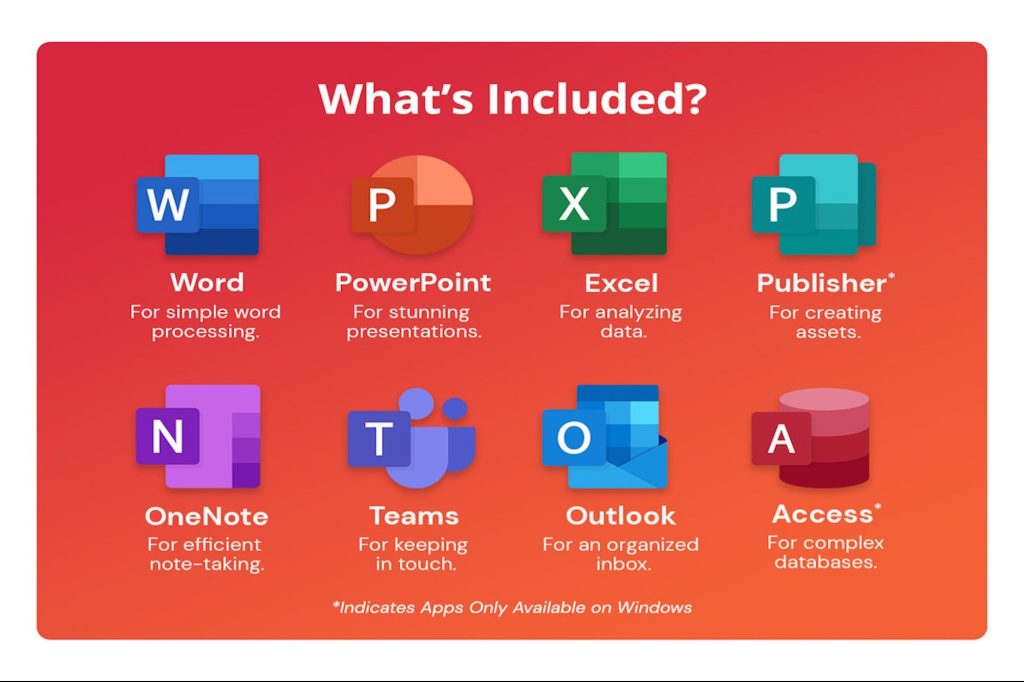
If you have worked with a computer even once in your lifetime (which most of us have), it’s safe to say that you have worked with at least one of the Office software. The most popular ones are Microsoft Word (for writing and making documents), Microsoft PowerPoint (for making presentations) and Microsoft Excel (for creating spreadsheets). Many users use all of these tools daily and still don’t know that Microsoft Office Suite is one of the successful Case studies in product bundling.
This bundle sales promotion plan goes all the way back to 1989 and was made by the company, including three of the most powerful apps in the brand: Word, Excel, and PowerPoint. The concept behind bundling these applications was to provide users with a comprehensive set of tools for various tasks, from word processing and data analysis to presentations, in a single, cost-effective package. Remember that these (and other apps) were sold separately and used to cost more. Also, installing apps individually takes time and can be inconvenient for most users. In 1989, the company decided to sell all of these in one unique installment package, making one of the best product bundle examples in the history of computer apps.
Read More: Everything about shopify combine discounts
This became an attractive option for both individual users and businesses. The office bundling strategy simplified the purchasing process and encouraged users to standardize on Microsoft products, ensuring compatibility and ease of use across different functions and departments.
Why has the Microsoft Office suite gone down in history as one of the case studies in product bundling? Here are some of the reasons:
- The integration of the applications within the suite allows for seamless interoperability. Features like copy-pasting data between Excel and Word, embedding PowerPoint slides into Word documents, and using shared templates and themes significantly enhance productivity and user experience.
- The smooth and consistent user interface across all applications reduces the learning curve (especially if you’re a newbie). Remember the first time you installed Office and just started working? This is an advantage of this app bundle.
- Office Suite is constantly updated, aiming to include new features and applications (things like Outlook for email and calendar management, Access for database management, and OneNote for note-taking). When an app stays relevant and useful, it attracts more users and keeps the current ones loyal.
Hulu with Premium! Get a Hulu subscription with premium Spotify
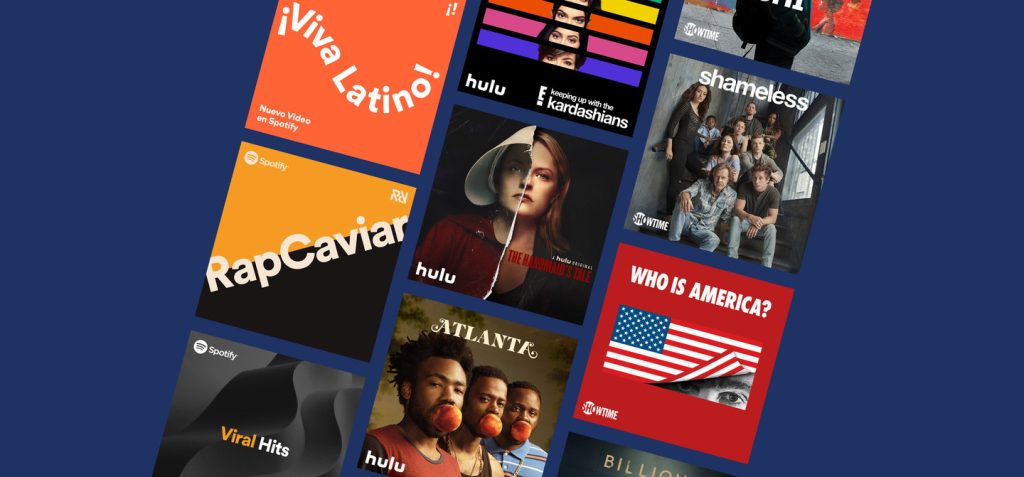
This example of product bundling in our case studies has one slight difference. A difference that makes it unique and interesting is that it’s designed only for students. In this bundle, you will get access to Hulu’s plan (with ads) if you buy the Spotify premium subscription
This example shows us product bundling and price bundling in one single plan and is a very good one for understanding product bundles.
Let’s get some background: in 2018, Spotify and Hulu launched a bundle offering that combined Spotify’s Premium music streaming service with Hulu’s streaming video service at a discounted rate. This partnership allowed customers to enjoy music and TV shows/movies for a lower price than subscribing to each service individually. Now, it’s offered only to students. Users who had previously not been on a student plan will lose access to Hulu if they cancel or upgrade their subscription to a different plan.
This type of mixed bundling has a few traits that set it apart from our other examples:
- It’s exclusive: Hulu with premium is designed only for students. This gives the included group a sense of exclusivity and belonging, like when an option is given “only to you” and feels pleasant.
- It’s practical: people who listen to music and are willing to pay for a subscription for their songs will probably do the same for a movie or show plan, too. That’s why Hulu is a good addition to Spotify, just like any streaming service can potentially be.
- It’s convenient. This is one of the good product bundle pricing examples that teaches sellers the value of a good offer. Both subscriptions are sold for the low price of $5.99, which is pretty cheap considering what it includes.
Fast Bundle, a Shopify bundle app for all your needs
Now that you read these 4 free case studies in product bundling, you must know that bundling can make or break a business’s livelihood, and design its path to profits. a good bundle is planned, customized, and tailored to your customer’s desire. This is exactly what Fast Bundle does for you. we help you make your processes more organized, and make 6 different bundles (mixed, pure, discounts, etc). all of these successful case studies are types that you will find in Fast Bundle and can present to your customers with a few clicks.

